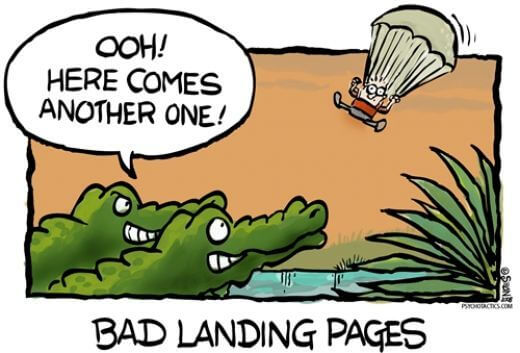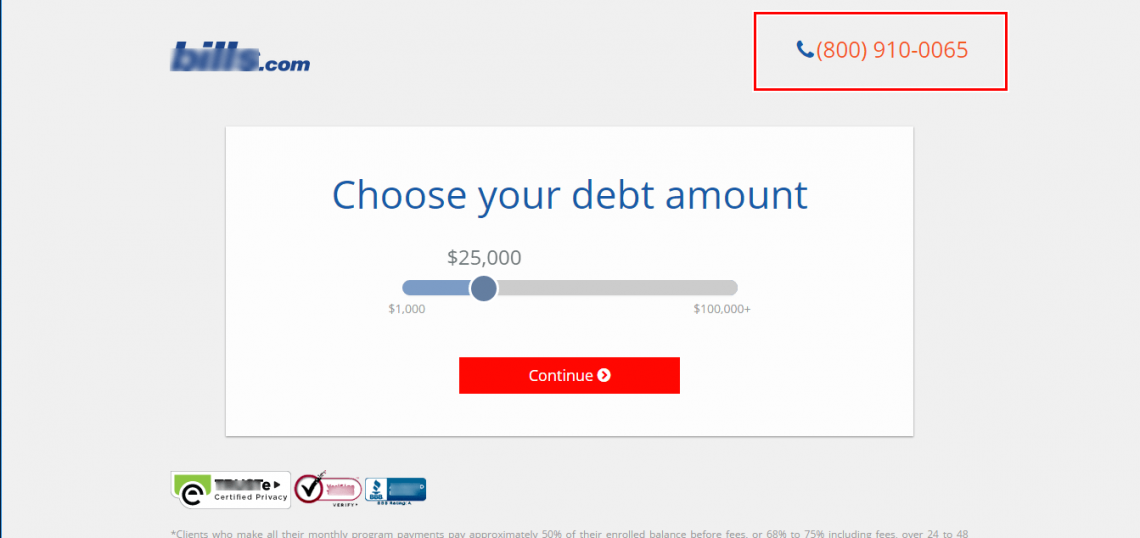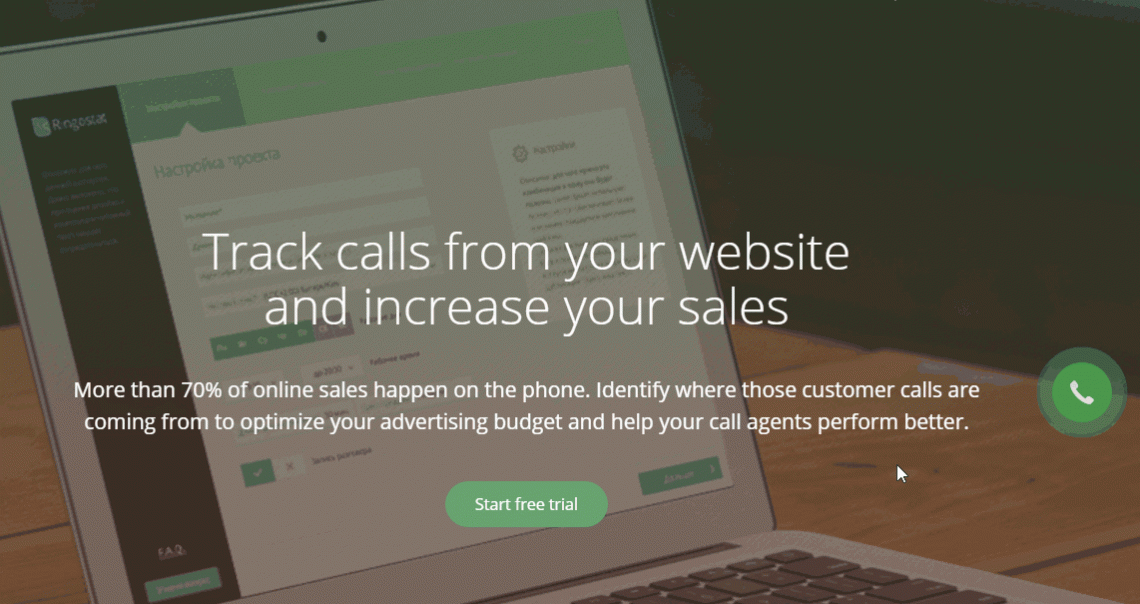A/B Testing of Landing Pages: Things to Remember
Every owner of a landing page wishes that it would bring sales. If you are one of them, you probably have tons of ideas about the semantics, structure and design for increasing the efficiency of your page. But how can you find out which of the variants would be optimal for generating target conversion? There is only one way to know: run an a/b test of a landing page.
How to avoid making mistakes in the testing

So you have run the a/b test of your landing page. You’ve had many ideas and finally they have been brought to life. You have already spent so much time and effort on testing its various versions and chose the final option, which proved to be generating the major part of online conversions. However, after some time you notice that the sales rate is starting to drop. It is far smaller than it used to be before testing.
What was your mistake? Most probably, you haven’t taken into the account one of the most important indicators of the landing page efficiency. This indicator is the number of phone orders you have received. Perhaps, you have ignored the best landing variation because you had thought it was generating fewer leads. When in reality, it was so good that clients wanted to call right away.
Why you shouldn’t ignore call analytics
Ideally, a landing page owner would want the website visitors to click the button ‘purchase’ right away and receive the payment. As a result, 100 orders and not one annoying call. Unsurprisingly, most business owners want to analyse only visitors and buyers with the help of Google Analytics and nothing more.
But it is a giant mistake. By accounting call conversions you can separate target and non-target traffic. If a person has an urge to call, it means that the landing was 100% relevant for the search query. The main goal of the landing page is inducing action, and if there is a phone number on the page, it is illogical to ignore call analysis.
More often than not, landing page looks like this:

As you have noticed, there is phone number on top. Experts say, that having contact number on the landing page helps to gain trust and serves as a useful tool. Seeing a phone number, clients understand the following:
- there is a real telephone number for contacting the company, therefore it is not a scam
- it is possible to call and order right now
- it is possible to check whether a product is in stock
- there is an opportunity to quickly check all details and make sure that they want to make a purchase
Here is an example of a case, that illustrates how having a phone number on the website is helping increase the number of conversions.
Apart from that, there are many businesses that receive a lot of phone calls, even despite the fact that clients can make the purchase online in two clicks. You mustn’t ignore call conversions if your landing page is dedicated to one of the following topics.
- online shops
- real estate
- construction materials
- home services
- medicine
- education and trainings
- automobiles
The importance of phone call analytics for landing optimization can be supported by the case. You can assess the capabilities of call tracking for analysis of landing pages with dynamically inserted content.
Even if your landing is for another type of business, it is preferable to track phone calls in order to do the testing efficiently. Especially, if you don’t have that many channels for communication with clients, for example — no offline store. In this case, phone calls would be the only opportunity for them to learn about your product ‘live’.
The types of calls: now this is important
You should pay special attention to such metrics as ‘call uniqueness’. This is not just a whim, it is a part of having full-fledged analytics of your landing page.
The types of calls can vary, and at large they depend on your business type:
- Target – is a received call with duration longer than prescribed (i.e. during the call there was enough time for having conversation with a client)
- First target – is a call received from a specific number for the first time and which lasted longer than prescribed
- Unique – any first call from a phone number
- Unique target call – first call from a number, with duration longer than prescribed
- Repeat call – an incoming call with duration longer than prescribed, within the same sale deal.
Why is it important to separate those call types? To know which ones are relevant for your business. Let’s consider these examples:
- Your landing page was designed for selling sneakers. In this case, you need to pay attention to the metric ‘Target calls’. Because if you get a repeat call within several months, most probably it would be another order. Therefore, this call should be analysed as target as well.
- If your landing page was designed for real estate sales you should use ‘First target calls’ metric to get intermediate results. Purchases like that are only made once in several years, while closing a deal can take up to 6 months. Repeat sales are very rare in this business.
How to test landing page while accounting phone orders?
Now let’s see how you can do a full-fledged a/b testing with call analytics:
- choose a call tracking service
- determine the quantity of phone numbers for dynamic insertion, which would be displayed on your landing page
- Every visitor of different landing variations will be shown a separate phone number. The script is gathering info about phone number, which was shown to the visitor, source of the call down to the ad keyword, type, duration of the call, phone number of the caller. After the call, virtual PBX will redirect the call to you, integrate this info into a report and send it to Google Analytics.
- When you test your landing page, all the data on online conversions is directed to Google Analytics. After installing call tracking, you will see there various types of phone call analytical data: type of event such as target and unique call, etc.
You might use an additional opportunity to attract clients by installing a callback widget on your website. During the testing process, you can see how it impacts the increase of target conversions. Quality call tracking services offer callback widget for free, and that is why it is usually integrated in the call analytics system.

What will you get in the end?
Most importantly — objective results of the a/b testing. Thanks to the information, received with the help of call tracking, you will be able:
- to find out which landing option leads to a larger number of sales
- track behavioural patterns
- see the quantifiable representation of your web page efficiency
- continue experimenting with the landing, tracking constantly how its optimization impacts the users’ activity.
Overall, you can use call tracking for multiple tasks, apart from a/b testing. If you decide to use the call tracking reports, you will be able to get deep insights on your website conversions and make constant improvements of your landing page.
Author bio:
Julia Holovko is the Head of Marketing at Ringostat. She is responsible for all things marketing – strategy and tactics, growth and lead generation. She is also a mobile marketing enthusiast. Follow her on Twitter @julia_holovko.
.
Top Reads
Brand Monitoring: Tools & Guide for 2026
Brand Awareness Strategy [The Ultimate Guide for 2026]
The Best AI Hashtag Tracker and Other Hashtag Tracking Tools [2026]
Social Media Reach: How to Measure & Improve It in 2026?
X (Twitter) Analytics Tools: The 10 Best to Try in 2026
Sentiment Analysis: What is it & Why do You Need it in 2026?
Share of Voice: Definition, Calculation, Tools [2026 Guide]
Brand Reputation Management: 6 Expert Tips for 2026
A Complete Guide to AI Social Media Analysis [2025]
How to See How Many Times a Hashtag Was Used on X (Twitter)
Start Social Listening!
Get the Brand24 trial and start social listening like a PRO.